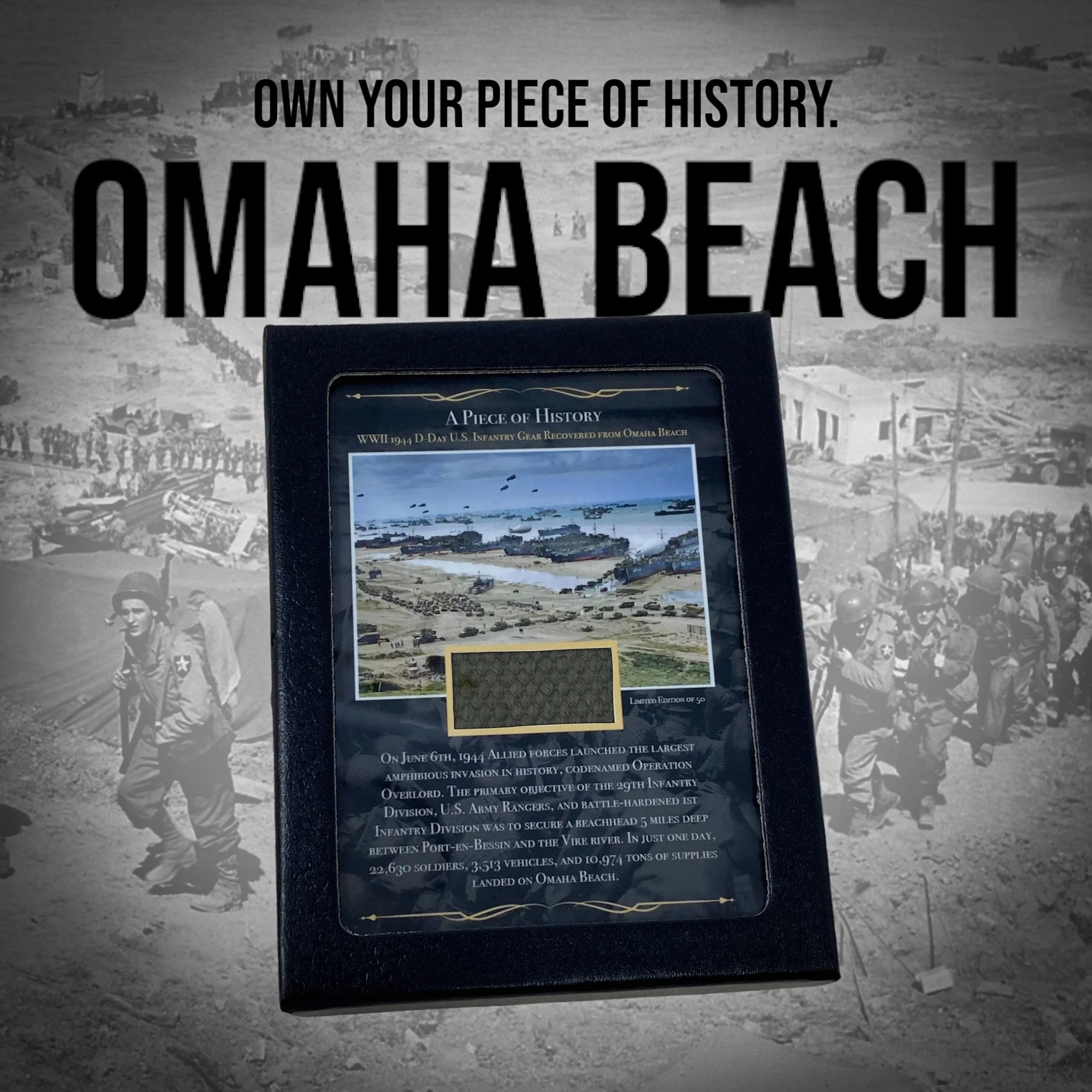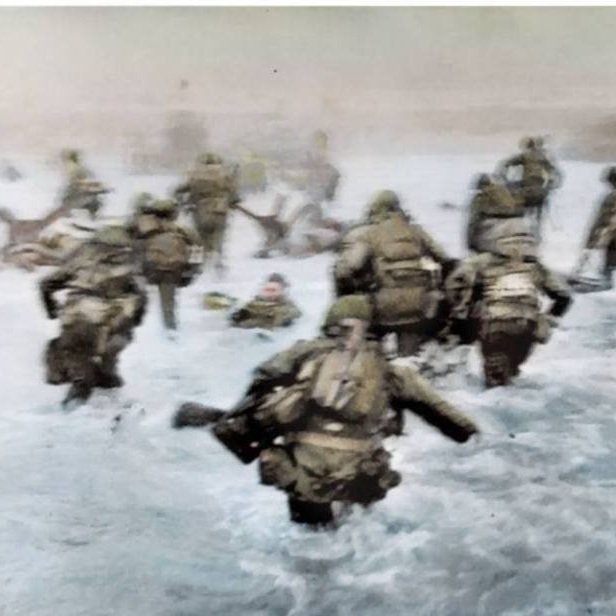RARE! WWII 1944 D-Day Omaha Beach (EASY RED) Sector Recovered U.S. Infantry Division Soldier’s Gear with Display Case (C.O.A. Included)















RARE! WWII 1944 D-Day Omaha Beach (EASY RED) Sector Recovered U.S. Infantry Division Soldier’s Gear with Display Case (C.O.A. Included)
Comes with a hand-signed C.O.A. and a full historical research write-up.
*Limited Edition of 50*
Own your piece of history today!
Due to an incredibly high demand for display case options, we are proud to offer one of our LIMITED EDITION series of HISTORIC DISPLAY CASE EXCLUSIVES. This incredible “Piece of History“ is professionally encased in a glass display case with plush padding and a tightly sealed display case. Each display features a historical photograph and a short description that corresponds to the artifact displayed. This display case measures a perfect 4.25 inches tall x 3.25 inches wide.
This series is a limited edition of 50 pieces, meaning that each “Piece of History” display is unique. The D-Day artifact fragment you receive may vary slightly from the display shown.
This incredibly rare and very historic piece of WWII history is an original U.S. Infantry Division soldier’s gear that was recovered from Omaha Beach during Operation Overlord Allied D-Day landings on June 6th, 1944. This was uncovered during a professional excavation Omaha Beach (EASY RED) sector located between Saint-Laurent-sur-Mer and Colleville-sur-Mer in Normandy during the 50th Invasion Anniversary in 1994.
Omaha Beach (EASY RED):
Easy Red is the codename for a stretch of beach on Omaha and, on june 6, 1944, the most heavily contested – with the only possible exception of Dog Green . It’s the largest of the ten sectors situated on the west side of Omaha, and within it is one of the vital “draws” or exits through the bluffs (“Easy 1 exit), hence it’s vital importance to the Allies and Germans alike. The Germans concentrated their resources mainly on defending these exits and at Easy red four main defence positions were to stop the landing forces: Widerstandsnest 62, 63, 64 and 65. Especially the first and the last proved to be formidable obstacles . Together with Fox Green and Fox Red, this was the main battleground on the west side of Omaha.
The task to force a breakthrough here with the first wave fell to the men of 16th Infantry Regimental Combat Team of Major General Clarence R. Huebner’s 1st Infantry Division: the Big Red One . They had already seen combat in Sicily and Tunesia and were considered a battle hardened unit. To complete their mission they were supported by 32 amphibious Sherman tanks from A Company, 741st Tank Battalion. Then there were the Combat Engineers of the “Gap Assault Teams” with probably the most important task of all. They had to clear paths through the obstacle belt made of “Czech Hedgehogs” and “Rommel’s Asparagus” which littered the beach and – as they were mined – were a potential deathtrap for the LCI’s and LCT’s of the followup waves with the rapidly rising tide; the invasion started at 06.30 at the lowest tide.
The tanks were to hit the beach just before the first wave of infantry. Unfortunately they did not make much of an impact as most of these DD-type Sherman’s never even made it to the beach; the rough seas sank most of them. Those that did make it were a prime target for the German guns; WN 61 had a PAK43 88 mm AT gun in a good position to cover both Easy red and Fox Green sectors.
The Gap Assault Teams (On Easy and Fox sectors most of them from the 299 Combat Engineer Batallion) fared a bit better: though their casualty rates were terrible (34 to 41% on Omaha) here on Easy Red they did manage to clear six gaps in the obstacle belt . They accomplished this under the most difficult of circumstances as they were in the very first waves to hit the beach and were exposed to the MG’s, Mortars and Guns of the untouched German Widerstandsneste.
The Combat Engineers were under very heavy fire as the Germans were particularly targeting their rubber dinghies loaded with 225Kgs of explosives each. Drenched and seasick – in contrast to the infantry they spent most of the night in the smaller LCM’s – these men were tested to the very limit. Add to this the the strong current on Omaha – most teams drifted to the left of their designated areas and in the proces lost most of their heavy equipment – and an image of the difficulties facing these brave Combat Engineers appears!